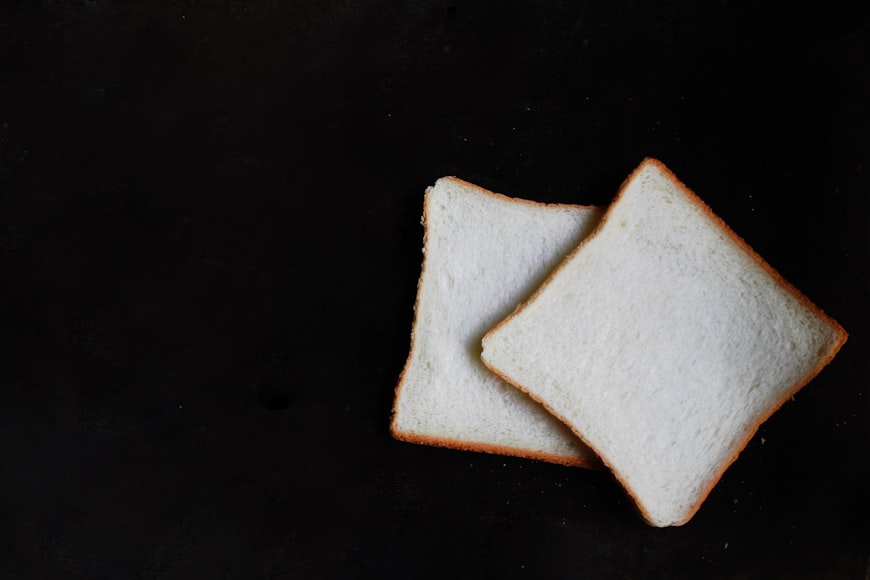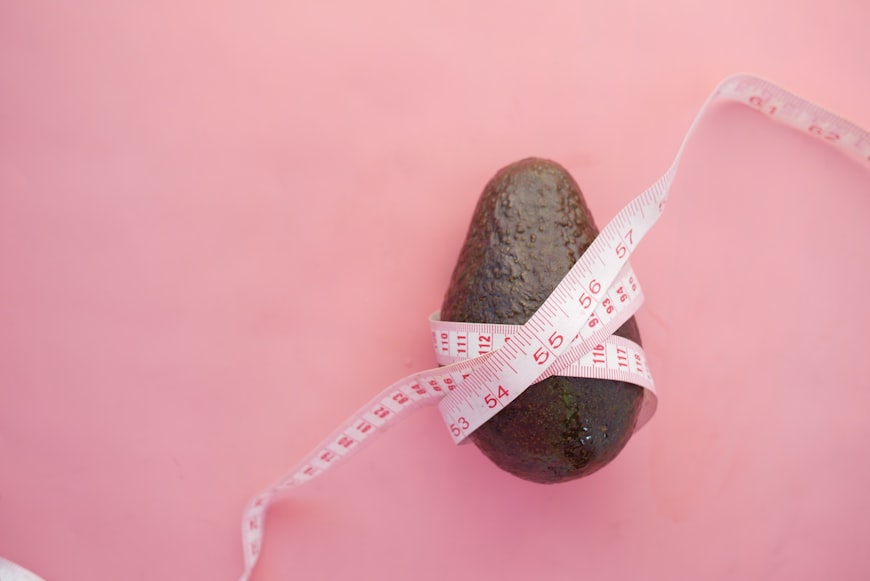Grain-Free Dog Food Outline

Introduction
Grain-free dog food has become increasingly popular in recent years, as more pet owners seek healthier alternatives for their canine companions. This article explores the benefits, considerations, and controversies surrounding grain-free dog food, providing a comprehensive guide for pet owners making informed decisions about their furry friends’ nutrition.
Benefits of Grain-Free Dog Food
- Reduced skin and digestive issues: Many dogs are allergic or sensitive to grains, which can cause skin irritation, itchy ears, and digestive problems. A grain-free diet can eliminate these triggers and improve overall health and well-being.
- Higher protein and nutrient content: Grain-free dog foods often contain higher levels of protein and other essential nutrients, such as vitamins and minerals. This can support muscle development, energy levels, and overall vitality.
- Fewer carbohydrates: Carbohydrates, which are found in grains, can contribute to weight gain and other health issues if not properly digested. Grain-free diets reduce carbohydrate intake, which can benefit dogs with certain health conditions.
- May be suitable for dogs with diabetes: Some grain-free dog foods are specifically designed for dogs with diabetes, as they have a lower glycemic index and help regulate blood sugar levels.
Considerations
- Not all dogs need a grain-free diet: While some dogs may benefit from a grain-free diet, it is not necessary for all dogs. If your dog has no known allergies or digestive issues, a grain-inclusive diet may be perfectly suitable.
- Higher cost: Grain-free dog foods tend to be more expensive than grain-inclusive options.
- Potential nutritional deficiencies: Some grain-free dog foods may not provide all the essential nutrients that dogs need. It is important to choose a high-quality grain-free dog food that meets the Association of American Feed Control Officials (AAFCO) guidelines.
Controversies
In recent years, there have been some concerns raised about a potential link between grain-free dog food and a heart condition known as dilated cardiomyopathy (DCM). However, the evidence is still inconclusive, and the Food and Drug Administration (FDA) has not yet established a definitive cause-and-effect relationship.
Conclusion
Grain-free dog food can be a beneficial option for dogs with grain allergies or sensitivities. However, it is important to carefully consider the benefits and potential drawbacks before making the switch. Always consult with your veterinarian to determine if a grain-free diet is appropriate for your pet and to ensure that you are providing a complete and balanced diet. By making informed choices about your dog’s nutrition, you can support their overall health and well-being for years to come.
Introduction:

Introduction:
Grain-free dog food has gained significant popularity in recent years, owing to increasing awareness about potential sensitivities to grains in some dogs. Here’s a clear and informative guide to help you understand the definition, purpose, and benefits of grain-free dog foods:
Definition and Purpose of Grain-Free Dog Food:
Grain-free dog foods are pet food formulas that exclude grains such as corn, wheat, rice, and oats. These grains have traditionally been used as sources of carbohydrates, but some dogs may have allergies, sensitivities, or digestive issues related to them. Grain-free diets aim to provide a digestible and alternative source of nutrients for such dogs.
Benefits of Grain-Free Dog Food:
-
No Allergens or Sensitivities: Grain-free dog foods can eliminate potential allergens or irritants that may trigger allergic reactions or digestive problems in dogs.
-
Improved Digestion: For dogs with grain sensitivities, grain-free diets can improve digestion, reduce gas and bloating, and support a healthy digestive system.
-
Higher Protein Content: Many grain-free dog foods have a higher protein content compared to grain-based formulas, which can benefit active dogs or those with protein requirements.
-
Alternative Nutrient Sources: Grain-free dog foods often use alternative grains or complex carbohydrates like potatoes, legumes, or sweet potatoes as energy sources. This provides dogs with essential nutrients without the potential for grain-related sensitivities.
-
Weight Management: Grain-free diets can be lower in carbohydrates than grain-based formulas, which may help dogs maintain a healthy weight or avoid weight gain.
Considerations:
-
Nutritional Completeness: Ensure that grain-free dog food meets all of the nutritional requirements of dogs as established by the Association of American Feed Control Officials (AAFCO).
-
Cost: Grain-free dog foods can be more expensive than traditional grain-based formulas.
-
Long-Term Concerns: Some studies suggest that exclusive diets of certain grain-free ingredients, such as legumes, may be associated with heart health concerns in dogs. It’s important to consult with a veterinarian for personalized advice.
Conclusion:
Grain-free dog food can provide a healthy and balanced diet for dogs with grain sensitivities or digestive issues. However, it’s essential to choose reputable brands that guarantee nutritional completeness and consult with a veterinarian to determine if a grain-free diet is right for your dog. By providing this information, you can help pet owners make informed decisions about their dogs’ nutrition and overall well-being.
Benefits of Grain-Free Dog Food:

As a responsible pet owner, you’re committed to providing your furry companion with the best possible nutrition. Grain-free dog food has emerged as a popular choice among health-conscious pet owners, offering a range of benefits for your beloved canine friend.
Improved Digestion and Skin Health
Traditional dog food often contains grains like wheat, corn, and rice, which can be difficult for some dogs to digest. Grain-free diets eliminate these potential allergens, reducing digestive issues such as bloating, gas, and diarrhea. By avoiding grains, dogs can also absorb nutrients more efficiently, leading to improved overall health.
Grain-free diets are also beneficial for dogs with sensitive skin. Grains can contribute to inflammation and itching, but eliminating them from the diet can soothe the skin and reduce allergy symptoms. Omega-3 fatty acids, often found in grain-free dog food, further support skin health and reduce inflammation.
Reduced Allergies and Sensitivities
If your dog is prone to allergies or sensitivities, a grain-free diet can be a game-changer. Grains are one of the most common allergens in dog food, so removing them can significantly reduce allergy symptoms such as itchy skin, sneezing, and runny eyes. Grain-free diets can also help dogs with food intolerances, as it eliminates potentially irritating ingredients from their diet.
Weight Management
Grains are a high-carbohydrate food, and consuming too many carbohydrates can lead to weight gain in dogs. Grain-free diets are typically lower in carbohydrates, which can help dogs maintain a healthy weight. Additionally, the high protein content in grain-free dog food promotes satiety and reduces hunger pangs.
Other Benefits
In addition to the aforementioned benefits, a grain-free diet may also improve:
- Energy levels
- Cognitive function
- Joint health
- Breath odor
Choosing a Grain-Free Dog Food
When selecting a grain-free dog food, it’s important to consider your dog’s individual needs and preferences. Look for foods that use alternative carbohydrate sources such as potatoes, sweet potatoes, or legumes. Read the ingredient list carefully and choose foods that are free from artificial additives and fillers.
Conclusion
Grain-free dog food offers a wide range of benefits for dogs of all ages and health conditions. By eliminating common allergens and irritants, grain-free diets can improve digestion, skin health, reduce allergies, and support overall well-being. If you’re considering switching your dog to a grain-free diet, be sure to consult with your veterinarian to ensure it’s the right choice for your furry friend.
Ingredients in Grain-Free Dog Food:

Grain-free dog food has become increasingly popular in recent years, as pet owners seek healthier and more nutritious options for their furry companions. This type of food is made without any grain ingredients, such as wheat, corn, and rice, which can cause digestive problems and allergies in some dogs.
Instead of grains, grain-free dog food uses alternative carbohydrates to provide energy and fiber for your pet. Here’s a breakdown of the key ingredients found in grain-free dog food:
Animal Proteins:
- Animal proteins are the primary source of amino acids, which are essential for building and repairing muscle tissue.
- Common animal protein sources in grain-free dog food include chicken, lamb, fish, and beef.
Alternative Carbohydrates:
- Grain-free dog food uses alternative carbohydrates instead of grains to provide energy and fiber.
- Common alternative carbohydrates include potatoes, sweet potatoes, lentils, and peas.
Fats and Oils:
- Fats and oils are essential for providing energy, supporting skin and coat health, and aiding in nutrient absorption.
- Grain-free dog food may contain healthy fats from animal sources, such as chicken fat or salmon oil, as well as plant-based oils like coconut oil or olive oil.
Vitamins, Minerals, and Supplements:
- Grain-free dog food is typically fortified with essential vitamins, minerals, and supplements to ensure that your pet receives a balanced diet.
- These may include vitamins A, D, E, and K, as well as minerals like calcium, phosphorus, and zinc.
Benefits of Grain-Free Dog Food:
Grain-free dog food offers several potential benefits for pets, including:
- Improved digestion: The absence of grains can reduce digestive problems and allergies in dogs sensitive to these ingredients.
- Reduced inflammation: Many grain ingredients contain lectins, which can trigger inflammation in some dogs.
- Increased energy levels: Animal proteins and high-quality alternative carbohydrates provide sustained energy for active pets.
Considerations for Grain-Free Dog Food:
While grain-free dog food can be a healthy choice for some dogs, it’s important to consider the following:
- Not all dogs benefit from a grain-free diet: Some dogs may have digestive issues or other health problems that require grains in their diet.
- Potential for nutritional deficiencies: Grain-free dog food may not meet all the nutritional requirements of dogs, so it’s crucial to choose brands that are fortified with essential vitamins and minerals.
- Higher cost: Grain-free dog food can be more expensive than traditional grain-based food.
Conclusion:
Grain-free dog food can be a nutritious and beneficial option for pets that are sensitive to grains or have digestive issues. However, it’s important to choose high-quality brands that provide a balanced diet with all the essential nutrients your dog needs. By understanding the ingredients in grain-free dog food, you can make an informed decision about whether it’s the right choice for your beloved companion.
Types of Grain-Free Dog Food:

As a grain-free dog food pet blogger, it’s crucial to provide comprehensive information on this specialized diet. Here’s a guide to the various types of grain-free dog food available:
1. Dry Kibble
- Most common: This is a convenient and shelf-stable option.
- Ingredients: Meat, fish, or plant-based proteins, vegetables, fruits, and sometimes vitamins and minerals.
- Benefits: Easy to store and dispense, provides a balanced diet.
2. Wet Canned Food
- Higher moisture: These foods contain 70-80% moisture, making them more hydrating for dogs.
- Ingredients: Similar to dry kibble but with added water.
- Benefits: More flavorful, easier to digest for older or dogs with dental issues.
3. Frozen Raw Food
- Raw ingredients: This type of food is made from uncooked meat, bones, organs, and vegetables.
- Ingredients: Typically includes whole animal proteins, fruits, and vegetables.
- Benefits: Provides a diet similar to what dogs would eat in the wild, can promote dental health.
4. Homemade Diets
- Customized: You have complete control over the ingredients and can tailor it to your dog’s specific needs.
- Ingredients: Meat, fish, rice, vegetables, fruits, and supplements.
- Benefits: Can be cost-effective, allows for flexibility in dietary choices.
Choosing the Right Type
The best type of grain-free dog food for your pet will depend on their individual needs, preferences, and health conditions.
Consider the following factors:
- Age and activity level
- Health conditions
- Taste preferences
- Budget
Conclusion
Grain-free dog food offers a variety of options to meet the nutritional needs of dogs with grain sensitivities or allergies. By understanding the different types available, you can make an informed decision that supports your pet’s health and well-being. Remember to consult with your veterinarian before making any significant changes to your dog’s diet to ensure it is appropriate and balanced.
Choosing the Right Grain-Free Dog Food:
As a grain-free dog food pet blogger, you play a crucial role in educating pet owners about the importance of choosing the right nutrition for their furry companions. Grain-free diets have gained popularity in recent years, but it’s essential to approach them with informed decision-making. Here’s a comprehensive guide to help you navigate the complexities of choosing the best grain-free dog food:
Consult with a Veterinarian:
Before making any changes to your dog’s diet, consulting with a licensed veterinarian is paramount. They can assess your dog’s overall health, specific needs, and recommend the most suitable grain-free food options.
Consider the Dog’s Age, Health, and Activity Level:
Grain-free dog foods vary in their nutritional composition. The ideal choice depends on the dog’s age, health concerns, and activity level. For example, puppies and pregnant or lactating dogs may require a diet higher in protein and fat. Older dogs or those with digestive issues may benefit from grain-free foods with lower protein and higher fiber content.
Read Ingredient Lists Carefully:
When choosing a grain-free dog food, pay meticulous attention to the ingredient list. Look for high-quality proteins, such as real meat or poultry, as the main ingredient. Avoid foods that rely heavily on fillers, such as corn, wheat, or soy. Instead, opt for foods that include wholesome fruits, vegetables, and healthy fats.
Protein Sources:
Avoid grain-free dog foods that use questionable protein sources, such as meat meals or by-products. These ingredients are typically lower in nutritional value and may contain artificial flavors or preservatives. Aim for foods that use high-quality, named protein sources, such as chicken, beef, or lamb.
Carbohydrates and Fiber:
While grains are generally avoided in grain-free diets, dogs still require carbohydrates for energy. Look for foods that include alternative sources of carbohydrates, such as sweet potatoes, potatoes, or legumes. Fiber is also essential for digestive health. Choose foods that provide a moderate amount of fiber to support regular bowel movements.
Essential Vitamins and Minerals:
Grain-free dog foods must be supplemented with essential vitamins and minerals that are typically found in grains. Make sure the food you choose meets the Association of American Feed Control Officials (AAFCO) nutritional standards and contains Taurine, an amino acid crucial for heart health.
Transitioning to Grain-Free Food:
If you decide to switch your dog to a grain-free diet, do so gradually over several days. Start by mixing a small amount of the new food with the old food and gradually increase the proportion of grain-free food until you have completely transitioned. This helps prevent digestive upset and allows the dog’s body to adjust to the new ingredients.
Remember, choosing the right grain-free dog food is a journey that requires informed decision-making and collaboration with your veterinarian. By following these guidelines, you can ensure that your canine companion receives the optimal nutrition for a healthy and vibrant life.
Transitioning to Grain-Free Dog Food:
As a responsible pet owner, you want the best for your furry companion. One way to ensure their optimal health is by feeding them a nutritious and balanced diet, including grain-free dog food. However, transitioning your dog to a grain-free diet should be done gradually to prevent any digestive discomfort.
Benefits of Grain-Free Dog Food:
- Improved digestion and reduced inflammation
- Higher protein content for optimal muscle development
- Reduced risk of allergies and skin issues
- Enhanced coat health
Step-by-Step Transition Process:
-
Start Slowly: Begin by mixing a small amount of grain-free food (about 1/4) with the current food. Gradually increase the proportion of grain-free food over time.
-
Monitor Daily: Observe your dog for any changes in behavior, stools, or appetite. If any digestive issues arise, slow down the transition or consult with your veterinarian.
-
Weekly Adjustment: Increase the ratio of grain-free food by 25% each week until it completely replaces the original food.
-
Watch for Signs of Discomfort: Be mindful of any changes in your dog’s stools, such as diarrhea or constipation. Adjust the transition speed or seek veterinary advice if necessary.
-
Maintain a Balanced Diet: Ensure that the grain-free food you choose provides complete and balanced nutrition that meets your dog’s specific requirements.
-
Consider Individual Needs: Each dog is unique, so the transition process may vary. If your dog has sensitive digestion or any underlying health conditions, consult with your veterinarian before making a dietary change.
-
Monitor Long-Term Health: Once fully transitioned, continue to monitor your dog’s overall health and well-being. Regular veterinary check-ups and dietary adjustments as needed can ensure optimal nutrition and vitality.
By following these steps, you can transition your dog to grain-free food safely and effectively. Remember to prioritize your dog’s health and consult with a veterinarian if any concerns arise.
Common Misconceptions about Grain-Free Dog Food:
As a grain-free dog food blogger, I’ve encountered numerous misconceptions associated with this type of diet. To dispel these myths and provide accurate information, let’s explore some of the most common misunderstandings:
Misconception 1: Grain-Free Dog Food is Only for Dogs with Grain Allergies
While some dogs may develop allergies to specific grains, such as wheat or corn, the majority of dogs do not have grain allergies. Grain-free dog food can benefit dogs of all ages and health conditions by eliminating these potential allergens.
Misconception 2: Grain-Free Dog Food is More Expensive Than Traditional Dog Food
Contrary to popular belief, grain-free dog food is not necessarily more expensive than traditional grain-based options. While some premium brands may cost more, many affordable grain-free options are available. The cost depends on the quality of the ingredients and manufacturing practices.
Misconception 3: Grain-Free Dog Food is Not as Nutritious as Grain-Based Dog Food
Grain-free dog food can be just as nutritious as grain-based food. Grains are often used as inexpensive fillers in dog food, contributing little to nutritional value. Grain-free options often incorporate nutritious alternatives such as lentils, sweet potatoes, and quinoa, providing essential vitamins, minerals, and fiber.
Additional Misconceptions
-
Grain-free dog food can cause heart disease: This claim is not supported by scientific evidence. The American Heart Association has stated that there is no connection between grain-free diets and dilated cardiomyopathy (DCM) in dogs.
-
Grain-free dog food is hard to digest: Grain-free foods can be easily digestible for dogs. The absence of grains may reduce gastrointestinal issues, especially for dogs with sensitive stomachs.
-
Grain-free dog food is not palatable: Many dogs find grain-free food highly palatable. The absence of grains may enhance the flavor and aroma, making it more appealing to dogs.
Conclusion
Grain-free dog food offers numerous benefits for dogs, regardless of whether they have grain allergies. It is an increasingly popular option that is not necessarily more expensive or less nutritious than grain-based food. By dispelling these common misconceptions, pet owners can make informed decisions about the best diet for their canine companions.
Conclusion:
As pet owners, we strive to provide our beloved dogs with the best possible nutrition to support their health and well-being. Grain-free dog food has emerged as a popular dietary option, gaining widespread attention for its potential benefits. This article delves into the role of grain-free dog food and its impact on canine health.
What is Grain-Free Dog Food?
Grain-free dog food, as the name suggests, does not contain grains such as wheat, corn, or soy. These ingredients are commonly found in traditional dog food but have been linked to various health issues in some dogs. By eliminating grains, grain-free diets focus on providing alternative sources of carbohydrates, such as sweet potatoes, lentils, and peas.
Benefits of Grain-Free Dog Food
- Reduced Allergies: Some dogs experience allergic reactions to grains, resulting in skin irritation, digestive upset, and respiratory issues. Grain-free diets can help eliminate these allergens, improving a dog’s overall health.
- Improved Digestion: Grains can be difficult for some dogs to digest, leading to bloating, gas, and diarrhea. Grain-free diets promote easier digestion and reduce digestive discomfort.
- Weight Management: Grain-free foods tend to be lower in carbohydrates than traditional grain-based formulas. This can be beneficial for dogs prone to weight gain or those with diabetes.
- Increased Energy Levels: Grain-free diets often contain high-quality protein sources that provide dogs with sustained energy throughout the day.
Considerations for Grain-Free Dog Food
While grain-free dog food offers potential benefits, there are a few considerations to keep in mind:
- Consult with a Veterinarian: Before switching to a grain-free diet, consult with your veterinarian to determine if it’s the right choice for your dog’s individual needs.
- Nutrient Supplementation: Grain-free diets may not provide all the necessary nutrients for dogs. It’s essential to choose a formula that contains a complete and balanced profile of protein, fats, vitamins, and minerals.
- Transition Gradually: When transitioning to a grain-free diet, do so gradually to avoid digestive upset. Start by mixing small amounts of the new food with the old food and gradually increase the grain-free portion over several days.
Conclusion
Grain-free dog food can be a beneficial dietary choice for dogs with certain health conditions and preferences. It can reduce allergies, improve digestion, aid in weight management, and provide sustained energy. However, it’s important to consult with a veterinarian before making any dietary changes and to choose a formula that meets your dog’s individual nutritional requirements. By carefully considering the pros and cons, you can determine whether a grain-free diet is the right choice to support your canine companion’s optimal health.


















